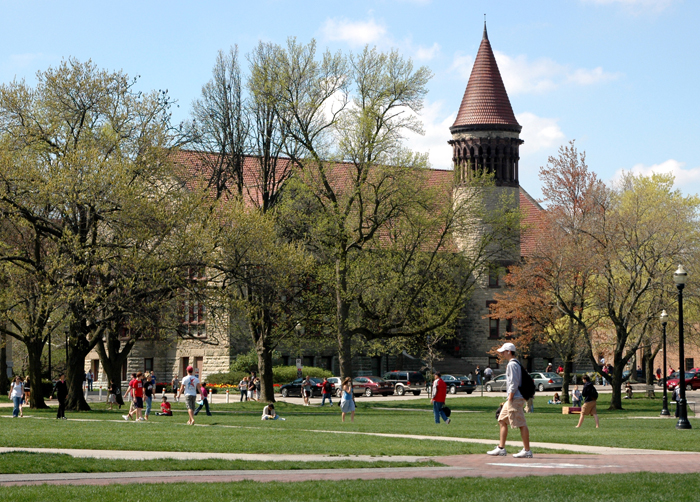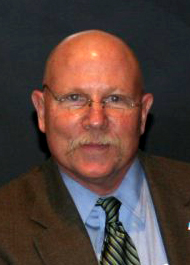
Photo Credit: Peter Rejcek |
Orton Hall on the campus of The Ohio State University in Columbus houses the Department of Geology, which includes offices for several researchers affiliated with the Byrd Polar Research Center, including Terry Wilson and Larry Krissek. |
At the forefront
Byrd Polar Research Center evolves with the times
By Peter Rejcek, Antarctic Sun Editor
Posted May 23, 2008
Many of the professors and scientists associated with the Byrd Polar Research Center at The Ohio State University will concede that few of the university’s 52,000 students are aware that OSU is home to one of the premiere polar research institutions in the country.
But Mike Willis knew about the extraordinary work scientists at Byrd Polar have been doing in Antarctica and the Arctic, as well as in high alpine regions throughout the world. He had e-mailed two of the center’s preeminent scientists in 1996 — Ian Whillans and Gordon Hamilton — about joining the university’s graduate program in glaciology, with an eye toward fieldwork in Antarctica.
That was while Willis was still living in his native Scotland, attesting to the center’s international reputation. Today he’s a post-doctoral fellow with his own office at Scott Hall, a nondescript building on the far western outreaches of OSU’s sprawling main campus in Columbus, which houses the Byrd Polar Research Center (BPRC) and its facilities, which include a library, its own ice core storeroom and the U.S. Polar Rock Repository.
He says there are many advantages to being under the BPRC aegis. “The respect you get when you say you’re from the Byrd Polar Research Center,” he counts as one. “This is probably the best research center for polar studies in the nation.”

Photo Credit: Peter Rejcek
The Byrd Polar Research Center building.

Photo Credit: BPRC Web site
Berry Lyons, director of the Byrd Polar Research Center.
The center’s history dates back to the International Geophysical Year (IGY), a coordinated scientific campaign that began in 1957 to study the world in unprecedented detail, with particular focus on the polar regions. Richard Goldthwait, a geologist from OSU, had conducted research in Antarctica since the 1930s and participated in IGY. The university later served as the processing center for all the IGY data collected.
In 1960, Goldthwait helped establish the Institute of Polar Studies and became its first director. In 1987, after the institute acquired the papers and memorabilia of famed polar explorer Adm. Richard E. Byrd, it changed its named to the Byrd Polar Research Center.
More than just the name has changed in the last five decades, according to BPRC’s current director, Berry Lyons.
“As the science has changed, the tools have changed, and we have evolved with those changes and tools,” says Lyons, who is only the sixth director in the center’s 48-year history. “Also, some of the questions to be asked changed as well. I think one of the things that provides the glue is that most of us here are interested in how the Earth changes, how the climate changes.”
The concept of climate change may seem relatively new given the long-term memory lapses of today’s culture, but scientists at BPRC took notice of the changes at the poles at least 40 years ago. That’s when John Mercer, a glaciologist at OSU, first suggested that the West Antarctic ice sheet might be unstable.
That legacy lives on today. “We’re interested in climate change because one of the obvious manifestations of climate change is seeing ice go away,” Lyons says. “With such an emphasis here on glaciology and glaciers, it’s clear that we should be a leader on the disappearance of ice around the world. That’s one of our strengths.”
It took time to build up that muscle. Larry Krissek, an associate professor of earth sciences, arrived at OSU in 1982 before the polar institute changed its name. He recalls that the majority of the staff was classic land-based geologists then.
“At that time it was really easy for someone from the geology side to get involved [in Antarctica] because there were lots of people here with lots of experience,” says Krissek, whose Antarctic-related research has included the deep-sediment-coring projects for Cape Roberts in the1990s, and more recently ANDRILL.
“The Byrd center has really diversified now, which is a good thing for the health of the Byrd center, and also for the science that needs to be done,” he adds.
1 2 Next







